
-
 Inter beat Kairat Almaty to maintain Champions League perfection
Inter beat Kairat Almaty to maintain Champions League perfection
-
Newcastle sink Bilbao to extend Champions League winning run

-
 Wall Street stocks rebound after positive jobs data
Wall Street stocks rebound after positive jobs data
-
LPGA, European tour partner with Saudis for new Vegas event

-
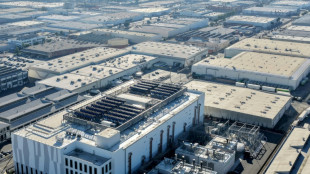 Eyes turn to space to feed power-hungry data centers
Eyes turn to space to feed power-hungry data centers
-
Jazz lose Kessler for season with shoulder injury

-
 League scoring leader Messi among MLS Best XI squad
League scoring leader Messi among MLS Best XI squad
-
MLS bans Suarez for Miami's winner-take-all playoff match

-
 McIlroy appreciates PGA of America apology for Ryder Cup abuse
McIlroy appreciates PGA of America apology for Ryder Cup abuse
-
Garnacho equaliser saves Chelsea in Qarabag draw

-
 Promotions lift McDonald's sales in tricky consumer market
Promotions lift McDonald's sales in tricky consumer market
-
Five things to know about New York's new mayor

-
 Anisimova beats Swiatek to reach WTA Finals last four
Anisimova beats Swiatek to reach WTA Finals last four
-
US Supreme Court appears skeptical of Trump tariff legality

-
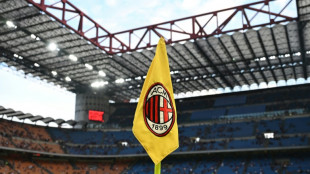 AC Milan post third straight annual profit on day of San Siro purchase
AC Milan post third straight annual profit on day of San Siro purchase
-
Angelina Jolie visits Ukrainian frontline city, media reports say

-
 UN says forests should form key plank of COP30
UN says forests should form key plank of COP30
-
Star designer Rousteing quits fashion group Balmain

-
 Mexico's Sheinbaum steps up cartel fight after murder of anti-narco mayor
Mexico's Sheinbaum steps up cartel fight after murder of anti-narco mayor
-
Attack on funeral in Sudan's Kordofan region kills 40: UN
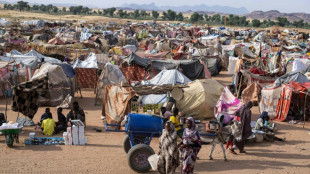
-
 Key PSG trio set for spell on sidelines
Key PSG trio set for spell on sidelines
-
Democrats punch back in US elections - and see hope for 2026

-
 BMW reports rising profitability, shares jump
BMW reports rising profitability, shares jump
-
Bolivia Supreme Court orders release of jailed ex-president Jeanine Anez

-
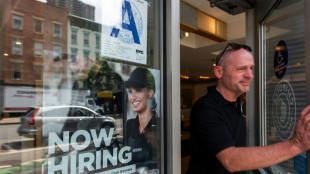 Wall Street stocks rise after positive jobs data
Wall Street stocks rise after positive jobs data
-
'Hostage diplomacy': longstanding Iran tactic presenting dilemma for West

-
 Rybakina stays perfect at WTA Finals with win over alternate Alexandrova
Rybakina stays perfect at WTA Finals with win over alternate Alexandrova
-
Le Garrec welcomes Dupont help in training for Springboks showdown

-
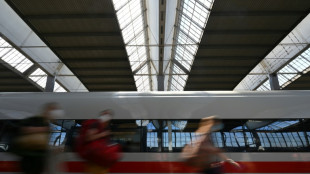 Brussels wants high-speed rail linking EU capitals by 2040
Brussels wants high-speed rail linking EU capitals by 2040
-
Swiss business chiefs met Trump on tariffs: Bern

-
 Spain's exiled king recounts history, scandals in wistful memoir
Spain's exiled king recounts history, scandals in wistful memoir
-
Wall Street stocks steady after positive jobs data
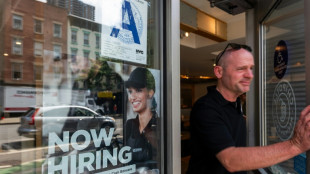
-
 Trump blasts Democrats as government shutdown becomes longest ever
Trump blasts Democrats as government shutdown becomes longest ever
-
Indian pilgrims find 'warm welcome' in Pakistan despite tensions

-
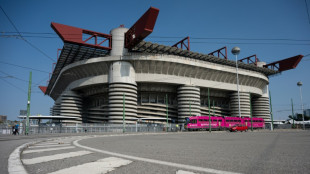 Inter and AC Milan complete purchase of San Siro
Inter and AC Milan complete purchase of San Siro
-
Swedish authorities inspect worksite conditions at steel startup Stegra
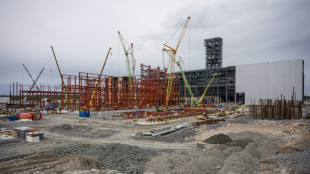
-
 Keys withdraws from WTA Finals with illness
Keys withdraws from WTA Finals with illness
-
Prince Harry says proud to be British despite new life in US

-
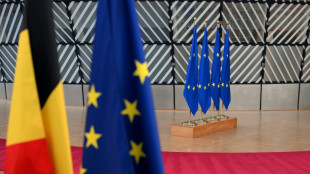 EU strikes last-ditch deal on climate targets as COP30 looms
EU strikes last-ditch deal on climate targets as COP30 looms
-
Stocks retreat as tech bubble fears grow
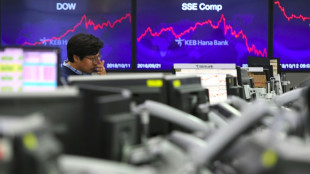
-
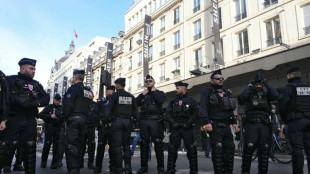 Shein opens first permanent store amid heavy police presence
Shein opens first permanent store amid heavy police presence
-
West Indies edge New Zealand despite Santner brilliance

-
 French pair released by Iran await return home
French pair released by Iran await return home
-
German factory orders up but outlook still muted
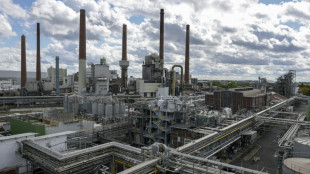
-
 Death toll tops 100 as Philippines digs out after typhoon
Death toll tops 100 as Philippines digs out after typhoon
-
Attack on key city in Sudan's Kordofan region kills 40: UN

-
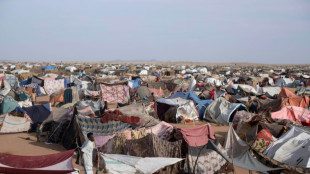 'No one could stop it': Sudanese describe mass rapes while fleeing El-Fasher
'No one could stop it': Sudanese describe mass rapes while fleeing El-Fasher
-
Champagne and cheers across New York as Mamdani soars to victory

-
 Medieval tower collapse adds to Italy's workplace toll
Medieval tower collapse adds to Italy's workplace toll
-
BMW boosts profitability despite China, tariff woes
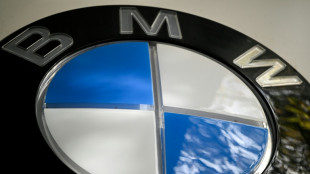

Building blocks? Cutting pollution from steel, concrete and aluminium
They hold modern life together in everything from airplane parts to apartment blocks, but steel, concrete and aluminium come with a hefty climate cost that the world could be paying for decades.
Heavily reliant on fossil fuels, they account for a significant chunk of greenhouse gas emissions -- pollution that is particularly hard to cut fast enough to meet global warming goals.
The three sectors say they aim to slash -- or even eliminate -- their CO2 emissions by 2050, despite growing demand in a rapidly urbanising world.
To do that will require a buildings "revolution", according to the United Nations, while the International Energy Agency wants greater recycling, cleaner energy and technological innovation.
- Cement and concrete -
"Concrete is the second most used substance on Earth after water, and vital for much of our modern infrastructure," said some of the industry’s biggest players including Cemex, Heidelberg and Holcim, Tuesday.
With demand expected to rise 50 percent by 2050, tackling the industry's emissions is becoming increasingly "urgent", they said.
Limestone and clay must be heated to 1,450 degrees Celsius to produce the rock-like residue known as "clinker" in cement. The fuel necessary to create such heat and the ensuing chemical reaction both produce CO2.
Switching to clinker substitutes, energy efficiency improvements, changing building design to cut down on the need for concrete, and using clean energy sources could substantially reduce emissions from the industry.
Carbon capture and storage (CCS) technology is also predicted to have a key role.
But observers fear that a planned reliance on solutions that are unproven at the scales required could distract from rapidly moving away from fossil fuels.
The Global Cement and Concrete Association said it expects the technology to account for 36 percent of the industry's global CO2 reductions by 2050.
- Steel -
Highly polluting coal makes up some 75 percent of the raw material and energy used by the steel and iron industry, according to the IEA.
The industry says it plans to replace coal-dependent blast furnaces with natural gas -- until that energy source can be swapped for "green hydrogen", produced by splitting water molecules using renewable electricity.
Green hydrogen paves the way for a gradual shutdown of polluting blast furnaces that could be replaced by the "direct reduction" of iron ore.
Steel firms are also betting on recycling scrap metals.
Europe is at the forefront of the green advances. The German industrial giant Thyssenkrupp -- singlehandedly responsible for 2.5 percent of the country's CO2 emissions -- plans to transform its historic plant in Duisburg to green steel.
But the scale of investment and rising energy prices have hampered the project.
The world's second-largest steelmaker, ArcelorMittal, acquired 80 percent of a Texas factory capable of producing steel without coal in 2022, and it is currently testing a pilot CCS system in Dunkirk, France.
Because of these difficulties, the IEA recognises that iron and steel manufacturing will remain "one of the last sectors in the Net Zero pathway that will still be using coal in 2050".
But it calls for carbon capture and hydrogen production to be "perfected and developed at scale" in the meantime.
- Aluminium -
Aluminium is a key for allowing for lighter cars and planes and in energy transition due to its ability to conduct electricity.
But it is also responsible for some of the highest emissions. One tonne of aluminium generates between five and 25 tonnes of CO2, depending on its source of electricity, according to Mineralinfo, a resource portal run by the French government.
Emissions depend above all on the type of fuel used -- often coal or heavy fuel oil -- to produce the vast quantities of energy necessary to make the metal.
The industry is hoping that recycling, CO2 capture, and emerging technology will bring down its emissions.
R.Fischer--VB

